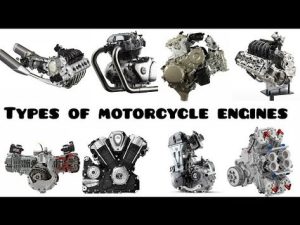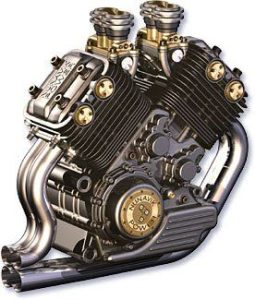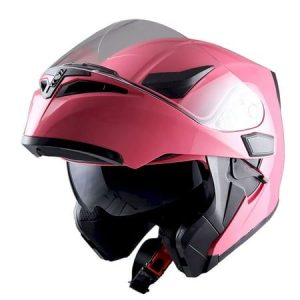Apr 24, 2024
The Power Within: Exploring Motorcycle Engines
The motorcycle engine is the beating heart of the machine. It’s what propels you forward, generates power, and delivers the thrill of the ride. This article delves into the world of motorcycle engines, exploring the different types, their inner workings, and interesting facts about these marvels of engineering.
Types of Motorcycle Engines
Motorcycle engines come in a variety of configurations, each with its unique characteristics:
Four-Stroke Engines:
The most common type of motorcycle engine, four-stroke engines complete a four-stroke cycle: intake, compression, combustion, and exhaust. They offer a good balance of power, efficiency, and emissions.
Two-Stroke Engines:
Simpler than four-stroke engines, two-stroke engines complete a two-stroke cycle: compression, combustion, intake, and exhaust. They are typically lighter and more responsive at lower speeds, but can be less fuel-efficient and produce more emissions.
Single-Cylinder Engines:
These engines have one cylinder and are known for their simplicity, light weight, and fuel efficiency. They are often found on smaller motorcycles and beginner bikes.
Multi-Cylinder Engines:
These engines have two or more cylinders and can deliver more power and torque compared to single-cylinder engines. They are common on larger motorcycles and high-performance bikes.
Inside the Engine: How it Works
Let’s take a simplified look at how a four-stroke motorcycle engine works:
-
Intake: The piston moves down, drawing in a mixture of air and fuel through the intake valve.
-
Compression: The piston moves up, compressing the air-fuel mixture in the cylinder.
-
Combustion: The spark plug ignites the compressed air-fuel mixture, creating a small explosion that drives the piston down.
-
Exhaust: The piston moves up again, forcing exhaust gases out of the cylinder through the exhaust valve.
This cycle repeats continuously, generating power that is transmitted to the rear wheel via the drivetrain.
Interesting Facts About Motorcycle Engines
The world of motorcycle engines is full of fascinating facts and innovations:
-
Early Motorcycle Engines: The first motorcycle engines were simple and borrowed technology from bicycles. Early engines were often unreliable and produced little power.
-
Engine Cooling: Motorcycle engines generate a lot of heat. Air-cooled engines use fins to dissipate heat, while liquid-cooled engines use a coolant and radiator system for more efficient cooling.
-
Engine Performance: Motorcycle engine performance is measured in terms of horsepower and torque. Horsepower refers to the engine’s ability to produce power, while torque refers to its twisting force.
-
Future of Motorcycle Engines: The future of motorcycle engines is likely to see advancements in electric motorcycles, hybrid motorcycles, and alternative fuels. These advancements aim to improve efficiency, reduce emissions, and create a more sustainable future for motorcycling.

Taking Care of Your Motorcycle Engine
Proper maintenance is essential for keeping your motorcycle engine running smoothly and efficiently. Here are some basic tips:
-
Regular Oil Changes: Oil lubricates the engine components and reduces friction. Change your oil and oil filter at regular intervals as recommended in your motorcycle’s owner’s manual.
-
Air Filter Cleaning: A clean air filter ensures clean air enters the engine, promoting better combustion and engine performance. Clean or replace your air filter according to the manufacturer’s recommendations.
-
Spark Plug Maintenance: Spark plugs ignite the air-fuel mixture. Check your spark plugs regularly and replace them when worn or damaged.
-
Following the Owner’s Manual: Your motorcycle’s owner’s manual is a valuable resource. It contains specific maintenance recommendations and service intervals for your motorcycle engine.
By following these tips, you can help ensure your motorcycle engine runs smoothly and delivers years of riding enjoyment.
The motorcycle engine is a marvel of engineering, powering these machines and providing exhilarating rides. From understanding the different types of engines to their inner workings and interesting facts, there’s a lot to discover about these powerful cores. Remember, proper maintenance is key to keeping your motorcycle engine running at its best. So, explore the world of motorcycle engines, ride responsibly, and enjoy the journey!
Revving Up Your Knowledge: Motorcycle Engine Performance
Understanding motorcycle engine performance can help you choose the right bike for your riding style and appreciate the engineering behind these machines. Here’s a look at key factors that influence engine performance:
-
Engine Displacement: Engine displacement, measured in cubic centimeters (cc), refers to the total volume swept by all the pistons in an engine. In general, larger displacement engines produce more power.
-
Number of Cylinders: As mentioned earlier, motorcycles come with single, twin, or even more cylinders. More cylinders often translate to more power and smoother operation, but also add weight and complexity.
-
Valve Configuration: The number and arrangement of valves in the engine head influence airflow and efficiency. Modern engines often use four-valve configurations for optimal performance.
-
Fuel Injection vs. Carburetion: Fuel injection systems deliver fuel electronically, while carburetors rely on a mechanical process. Fuel injection generally offers better performance, fuel efficiency, and emissions control.
Enhancing Your Ride: Motorcycle Engine Modifications
Many motorcycle enthusiasts enjoy modifying their bikes to personalize performance or appearance. Here are some common engine modifications, but remember to prioritize safety and legality:
Exhaust Systems:
Aftermarket exhaust systems can alter power delivery and sound, but ensure they comply with noise regulations.
Air Intake Systems:
Performance air intake systems can improve airflow, but might require adjusting the fuel mixture for optimal performance.
Engine Tuning:
Engine control units (ECUs) can be tuned to optimize performance based on modifications or specific riding conditions. This should be done by a qualified mechanic.
Remember, engine modifications can affect handling, fuel efficiency, and emissions. Always prioritize safety and consult a mechanic before making any modifications to your motorcycle engine.
The Future of Motorcycle Engines: Innovation on Two Wheels
The motorcycle industry is constantly evolving, with new technologies emerging to improve engine performance, efficiency, and environmental impact. Here’s a glimpse into the future:
-
Electric Motorcycles: Electric motorcycles offer exciting possibilities for sustainable and powerful rides. Battery technology advancements are key to increasing range and reducing charging times.
-
Hybrid Motorcycles: Combining electric motors with gasoline engines, hybrid motorcycles aim to provide the power of a traditional motorcycle with improved fuel efficiency and reduced emissions.
-
Alternative Fuels: Exploring alternative fuels like biofuels or hydrogen could offer more sustainable options for powering motorcycles in the future.
These advancements promise an exciting future for motorcycling, with a focus on environmental responsibility and exhilarating riding experiences.
Conclusion
The motorcycle engine is a fascinating piece of machinery, and understanding its inner workings and how it affects performance can deepen your appreciation for these two-wheeled machines. Whether you ride a classic motorcycle or are curious about the future of electric and alternative fuel options, the world of motorcycle engines offers a thrilling journey of discovery. Ride safe and explore the wonders of motorcycle engineering!


















